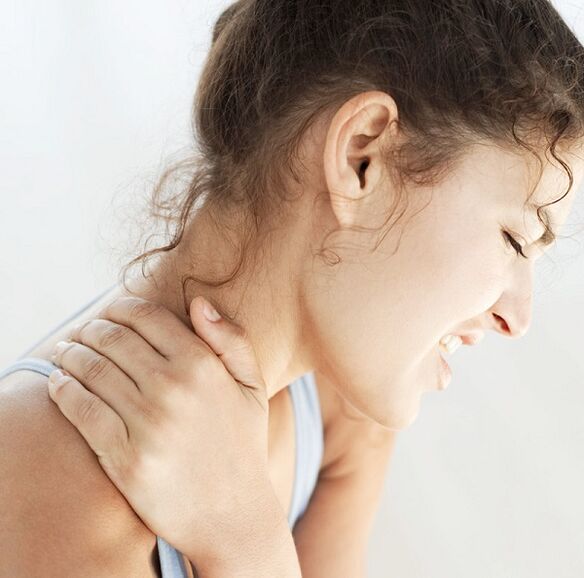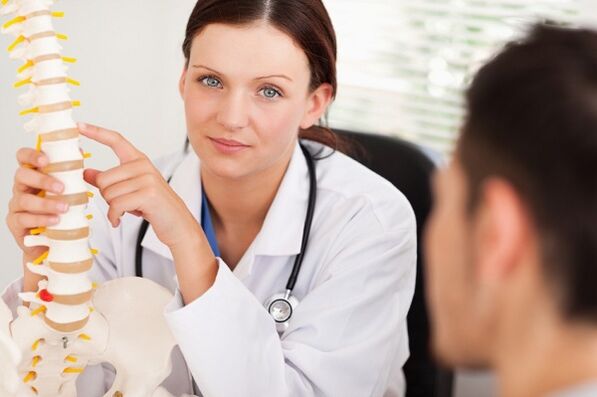Another serious disease of our time is octotechondrosis. His first activity may appear in his youth, when he spends a long time sitting in front of a computer or laptop, suddenly leaving the driver's seat. Most of them become such that it is difficult to turn or "lift" the head from the pillow. After a few days the exercise usually passes and it may take several months until the next arrival and there may be a flight. However, make no mistake! The first thing is seriouswarning that the mechanism of destructive destructive changes in your organization has already started. To understand this, let's understand what is osteochondrosis and why you should start treating it with the first symptoms.

What is osteochondrosis?
Osteochondrosis is a complex dystrophic change in the spine, in which the following stages can be distinguished:
- Dystrophic changes in the cartilaginous tissue of the intervertebral discs, as a result of which the movements are limited and cause a feeling of discomfort (stage I)
- Deformation of the discs and gradual reduction of the intervertebral distance (stage II).
- Disc herniation (stage III)
- Formation of the spine (osteophytes) and ossification of the ligaments, which makes the movement very difficult and painful (stage IV)
Hernia education is a difficult process that will be devoted to entire sections. By now, however, you should know that such a serious illness will occur if the onset cannot be treated at the right time. Therefore, that you had a premonition that such a herd, let's describe in two words about it. For this it is necessary to turn to the anatomy again and remember the device of the spine and spinal disc.
Dystrophy of the spinal disc leads to weakening of its fibrous ring and displacement of the amber head of the disc (core), resulting in the releaseThen under load the ring breaks and the core comes out of the disc - involuntarily watching the heavy load
In order to identify the presence of osteochondrosis, especially in the panic stage, when there is no evidence of explicitly introduced signs, and thus determine its direction and degree, it is necessary to do magnetic resonance imaging. This method of diagnosis does not cause any harm to human health, unlike X-rays, and also allows you to accurately determine the angle. Based on the doctor's description and MPT images, the specialist will make the right treatment plan for the patient, which is safe and healthy.
Types of spinal osteochondrosis
Osteochondrosis is of several types
- Cervix - the most common, as it affects both young and old.
- Chest - is relatively rare.
- Lumbar - develops after 40 years.
- Sacral - usually passes from the lumbar.
- Widespread - affects several departments or even the entire spine.
In the same sequence, the spontaneous development of this disease often occurs: starting from the upper cervical vertebrae and ending with spontaneous and spontaneous.
But it happens that the type of osteochondrosis is related to human activity. Thus, the cervix usually spreads among students, performers and all other leaders of the "brain" professions, although some of them have a long neck. and dpygih ppedctaviteley "cidyachih" cpetsialnoctey - kpectcyy pyccycy pyccycy pyccycyy pcyccycyThe thoracic occlusion is also common in those who are on their feet almost all day, as the latter are kept on the ground in the middle of war.
The causes of the appearance and development of osteochondrosis
However, osteochondrosis is not just a sedentary lifestyle, poor posture or the result of weight lifting. There are many other factors and reasons for the appearance of this disease.
Let's emphasize only the main ones:
- Improper diet with insufficient protein and high sugar and fat content.
- Impaired metabolism and hormonal imbalance.
- Infectious diseases.
- Hypothermia.
- Weight gain and obesity.
- Spinal cord injury.
- Age-related bone degeneration.
- Hereditary diseases.
- Stress.
The main symptoms of osteochondrosis
Osteochondrosis of the cervix:
- Pain in the neck and head (may give under the shoulder blade, in the sternum and arm).
- Dizziness, especially when changing position in the head.
- Numbness in the neck, face, tongue, subscapularis.
Chest osteochondrosis:
- Chest pain that can increase with inspiration and movement.
- Feeling of tingling in the chest.
Lumbosacral:
- Pain in the lumbar region (may be painful or acute) radiating to the legs, and the localization of pain in the legs can move along the entire length of the limb.
- Paresis of the legs (disorder or even loss of sensitivity).
The pain of osteochondrosis is of a specific neurological nature. So people tend to take headache, dizziness, tingling or pain in the legs as direct manifestations of diseases of the head or legs, although these may be symptoms of spinal osteochondrosis. Therefore, if you notice anything disturbing in your health, coinciding with the above signs, be sure to visit a neurologist. After examining the doctor, if there is a suspicion of this disease, he will definitely order an X-ray examination.
The main methods of treatment of osteochondrosis
Before treating osteochondrosis, you must first eliminate the causes of its occurrence.
The most effective relief of back pain:
- Therapeutic gymnastics (exercises for back pain).
- Laser MLS (after the second session the pain disappears).
- Khivamat (a unique procedure that immediately relieves pain, but you have to walk 2-3 times. )
Eliminating the causes of osteochondrosis progression is the main method for its treatment and prevention.

Prevention and treatment without drugs
This is above all:
- Active (mobile) lifestyle and sports.
- A normal diet with a protein diet that excludes fats and sugars.
- Physiotherapy (TP) with an individually selected set of exercises for each type of osteochondrosis.
- Physiotherapy (magnetic therapy, ultrasound treatment, electrophoresis, laser therapy).
- Massage, manual and reflexology.
However, such a conservative method of treatment is suitable for prevention, to prevent the progression of osteochondrosis, and not in the active period of the disease. But how to treat this disease, if it runs, its manifestations are obvious and a person has a stage of exacerbation, namely:
- pain and fever;
- limited, difficult movement.
In this case, exercise and physiotherapy are strongly contraindicated and only medical methods are used.
Medical methods of treatment
First of all, it is necessary to stop the pain and relieve the inflammatory process in the irritated nerve root. For this purpose, the following are appointed:
- non-steroidal anti-inflammatory drugs (NSAIDs);
- steroidal anti-inflammatory drugs - corticosteroids, glucocorticoids;
- novocaine blockade (with severe pain);
- drugs to relieve muscle spasm;
- painkillers, gels and creams.
The second stage of treatment includes:
- The use of vasodilators: osteochondrosis always coexists with vasoconstriction and oxygen starvation of the brain (hence the headache and dizziness).
- Prescribing drugs that calm the nervous system: patients with this disease are always anxious and suspicious, in most cases they are very scared of the first attacks of the disease.
- Treatment of concomitant phenomena - this may be hypertension and cardiac dysfunction.
- Treatment should be prescribed by a neurologist in the form of droppers, injections and pills.
Do not try to cure the disease yourself!
At the end of the acute period and normalization of well-being return to non-drug preventive methods of treatment: exercise therapy, massage and physiotherapy - in the absence of contraindications.
Health for you!
































